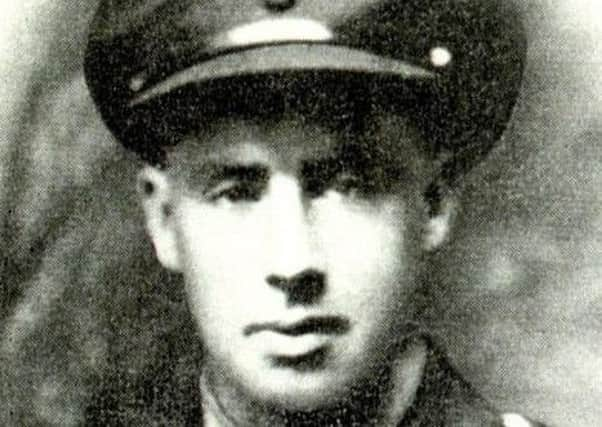Diminutive Irish WWI hero who drove back Germans to win VC


On November 12 Canon Peter Campion in his Remembrance Day sermon in St Patrick’s Cathedral in Dublin generated controversy when he praised James McClean as ‘a national hero’ for scoring a goal against Wales and for his refusal to wear a poppy.
A hero is one who is admired for their courage, outstanding achievements or noble qualities. By any standard James Samuel Emerson VC ought to be regarded as a hero.
Advertisement
Hide AdAdvertisement
Hide AdWhether he receives the recognition which he richly deserves on the centenary of his death and the episode which resulted in the award of his VC is unfortunately another matter altogether.
James, the son of John and Ellen Emerson, was born on August 3 1895 in the village of Collon, Co Louth. In the 1901 Census John Emerson is described as a land agent’s assistant and in the 1911 Census John Emerson is described as a land agent and farmer. According to the latter census, John and Ellen had been married for 32 years and the marriage produced eight children of whom seven survived.
James was educated at Mountjoy School in Dublin, a Church of Ireland foundation, and enlisted in the 3rd Battalion of the Royal Irish Rifles on September 16 1914. Having completed his preliminary training, he moved to France on April 16 1915 where he was to serve as a machine gunner. On September 29 1915 Corporal Emerson was wounded in the wrist and ankle at Hooge, and spent a lengthy period in hospital.
In April 1916 he was based in Portobello Barracks in Dublin and during Easter week guarded the Bank of Ireland.
Advertisement
Hide AdAdvertisement
Hide AdReturning to France, he was posted to the 9th Battalion of the Royal Irish Rifles and saw action on the Somme in July 1916.
On February 7 1917 he was selected for officer training at Lichfield and commissioned into the 9th Royal Inniskilling Fusiliers on August 1 1917.
He was 22-years-old, and a temporary second lieutenant in the 9th Battalion Royal Inniskilling Fusiliers (Tyrone Volunteers) when he won the VC for his actions during the German counteroffensive of December 6 1917, on the Hindenburg Line north of La Vacquerie, France.
The London Gazette explains how this diminutive officer – he was little more than five foot tall – won his VC:
Advertisement
Hide AdAdvertisement
Hide Ad‘He led his company in an attack and cleared 400 yards of trench. Though wounded [one soldier afterwards recalled seeing a huge bullet hole in Emerson’s steel helmet], when the enemy attacked in superior numbers, he sprang out of the trench with eight men and met the attack in the open, killing many and taking six prisoners. For three hours after this, all other officers having become casualties, he remained with his company, refusing to go to the dressing station, and repeatedly repelled bombing attacks. Later, when the enemy again attacked in superior numbers, he led his men to repel the attack and was mortally wounded. His heroism, when worn out and exhausted from loss of blood, inspired his men to hold out, though almost surrounded, till reinforcements arrived and dislodged the enemy.’
Unusually the medal was not presented to the family by the King but was presented to Emerson’s widowed mother by Brigadier-General Hackett-Pain on April 3 1918 at a ceremony in Drogheda’s Whitworth Hall before a packed audience. According to the account in the News Letter, the mayor of Drogheda presided at the ceremony. Second Lieutenant Emerson’s three brothers and L R Mercer, an uncle, attended the ceremony. Members of the Northumberland Fusiliers ‘lined both sides of the hall and presented arms when the award was made’.
In July 1919 Mountjoy School issued a special number of its school magazine detailing the various military honours won by former pupils. Emerson’s name took pride of place.
Second Lieutenant Emerson has no known grave and is commemorated on the Cambrai Memorial to the Missing (Panel 5 and 6) and his name is inscribed on the war memorial at the Church of Ireland parish church at Collon.
Advertisement
Hide AdAdvertisement
Hide AdHe is also commemorated on the war memorial in Mary Street, Drogheda, at Mount Temple School in Dublin (a Church of Ireland comprehensive school which has absorbed Mountjoy School), at the Ulster Tower at Thiepval and in St Anne’s Cathedral in Belfast.